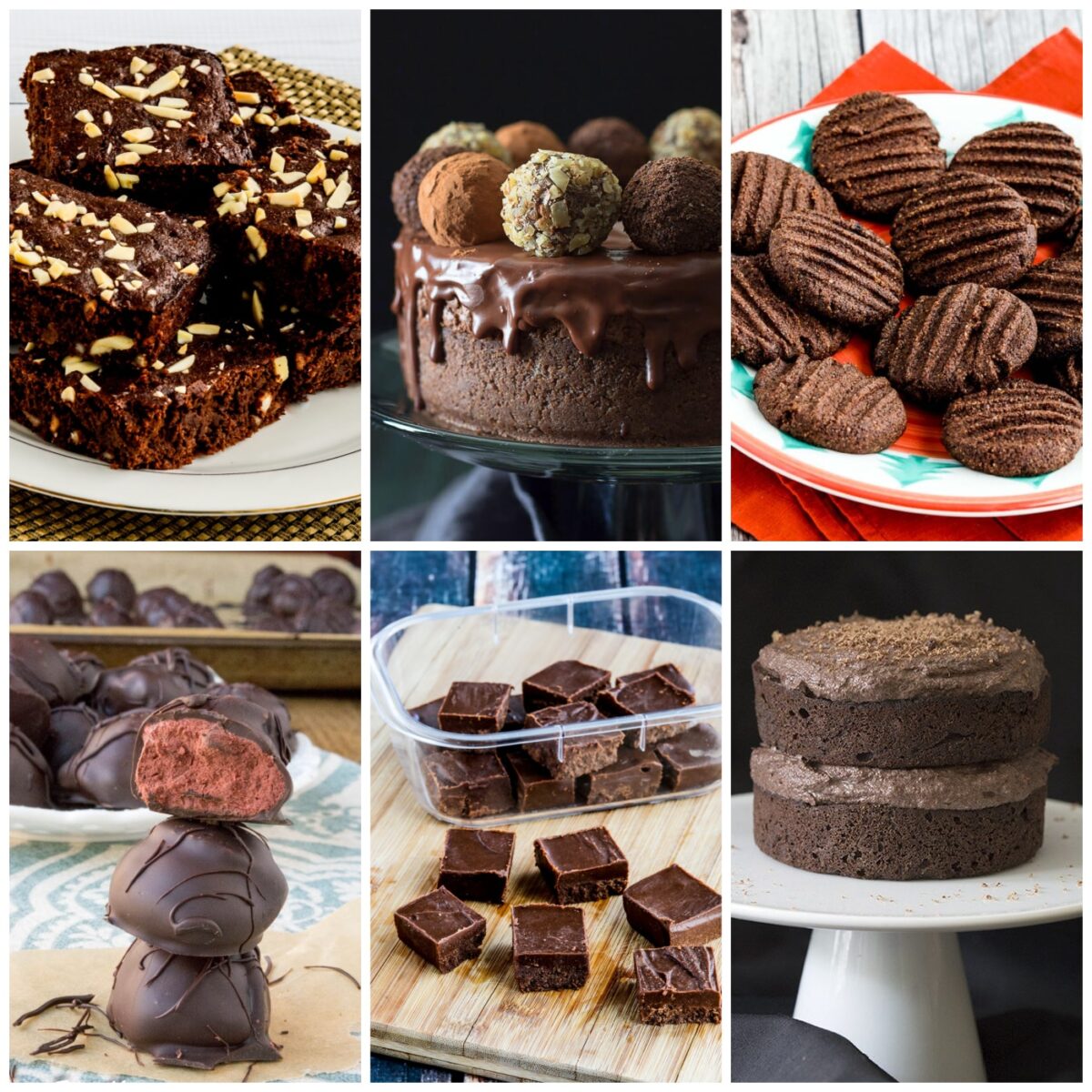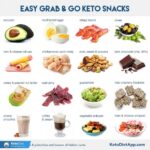Indulge your chocolate cravings without the guilt! This guide unveils the secrets to crafting decadent, low-carb chocolate desserts that are as satisfying as they are guilt-free. We’ll explore a world of rich, creamy textures and intense chocolate flavor, all while keeping your carb count low. Prepare to discover innovative recipes, clever ingredient swaps, and stunning presentation techniques that will transform your low-carb lifestyle.
From classic mousse to inventive new creations, we’ll navigate the landscape of low-carb chocolate, examining the best substitutes for traditional ingredients and offering expert tips for maintaining both flavor and texture. Whether you’re a seasoned low-carb baker or just starting out, this comprehensive guide will empower you to create irresistible chocolate treats that fit perfectly within your dietary goals.
Top 5 Low-Carb Chocolate Desserts
Indulge your chocolate cravings without the carb overload! These five recipes offer decadent chocolate experiences while keeping your carbohydrate intake low. Each recipe is designed to satisfy your sweet tooth without derailing your dietary goals. They vary in complexity and preparation time, allowing you to choose the perfect fit for your skill level and schedule.
Five Popular Low-Carb Chocolate Dessert Recipes
This section details five popular low-carb chocolate dessert recipes, providing a brief description of each to help you choose your next culinary adventure.
- Chocolate Avocado Mousse: This luxuriously creamy mousse uses avocado as its base, providing a rich, decadent texture without the guilt. The avocado masks its presence perfectly, leaving only the intense chocolate flavor. A touch of sweetener (like erythritol or stevia) balances the richness.
- Keto Chocolate Mug Cake: A quick and easy single-serving dessert, this mug cake is perfect for a spontaneous chocolate craving. It’s made with almond flour and cocoa powder, resulting in a moist and fudgy texture.
- Low-Carb Chocolate Peanut Butter Bars: These no-bake bars combine the satisfying crunch of peanut butter with the richness of dark chocolate. They are naturally sweetened and require minimal preparation, making them an ideal treat for busy days.
- Almond Flour Chocolate Brownies: These fudgy brownies use almond flour as a substitute for traditional wheat flour, resulting in a deliciously dense and moist texture. The intense chocolate flavor is balanced with a hint of sweetness.
- Coconut Flour Chocolate Chip Cookies: These cookies offer a delightful twist on a classic. Coconut flour lends a unique texture and subtly sweet flavor that complements the dark chocolate chips perfectly. They are slightly chewier than traditional cookies.
Recipe Comparison Table
The following table compares the carbohydrate content, preparation time, and difficulty level of each recipe. This allows for easy selection based on your preferences and available time.
| Recipe | Carbohydrates (per serving, approximate) | Preparation Time | Difficulty Level |
|---|---|---|---|
| Chocolate Avocado Mousse | 5g | 15 minutes | Easy |
| Keto Chocolate Mug Cake | 3g | 5 minutes | Easy |
| Low-Carb Chocolate Peanut Butter Bars | 7g | 20 minutes | Easy |
| Almond Flour Chocolate Brownies | 8g | 30 minutes | Medium |
| Coconut Flour Chocolate Chip Cookies | 6g | 35 minutes | Medium |
Nutritional Information Per Serving
Nutritional information is approximate and may vary based on specific ingredients and portion sizes. These values represent a general guideline. Always check your ingredient labels for accurate nutritional information.
| Recipe | Calories (approx) | Fat (approx) | Protein (approx) | Net Carbs (approx) |
|---|---|---|---|---|
| Chocolate Avocado Mousse | 250 | 20g | 5g | 5g |
| Keto Chocolate Mug Cake | 200 | 15g | 7g | 3g |
| Low-Carb Chocolate Peanut Butter Bars | 280 | 22g | 8g | 7g |
| Almond Flour Chocolate Brownies | 270 | 20g | 6g | 8g |
| Coconut Flour Chocolate Chip Cookies | 220 | 18g | 4g | 6g |
Visual Guide
Elevating the presentation of low-carb chocolate desserts involves thoughtful garnishing. The right garnish not only enhances the visual appeal but also adds another layer of flavor and texture, creating a truly memorable experience. The following are three visually striking and delicious garnishes that are easy to prepare and perfectly complement a variety of low-carb chocolate desserts.
Fresh Raspberry Coulis
A vibrant crimson coulis, made from pureed raspberries, offers a stunning contrast to the deep brown of chocolate. The jewel-toned color adds a touch of elegance, while the slightly tart flavor profile cuts through the richness of the chocolate, creating a delightful balance. The smooth, velvety texture of the coulis provides a luxurious mouthfeel. This garnish is particularly well-suited to rich chocolate mousse, brownies, or lava cakes, adding a burst of refreshing acidity. To prepare, simply blend fresh raspberries with a touch of erythritol or stevia to taste, straining the mixture to achieve a smooth consistency.
Chocolate Shavings with Sea Salt
Dark chocolate shavings, meticulously curled and arranged atop the dessert, create a sophisticated and visually appealing garnish. The deep brown of the chocolate, punctuated by the glistening white of sea salt crystals, presents a dramatic contrast. The texture offers a delightful interplay—the smooth, melting chocolate against the coarse crunch of the salt. The salty-sweet combination is a classic pairing that enhances the chocolate’s intensity and adds a surprising depth of flavor. This garnish is perfect for chocolate cakes, puddings, or even ice cream, adding a touch of elegance and complexity. To prepare, use a vegetable peeler to create thin curls from high-quality dark chocolate. Sprinkle generously with fine sea salt immediately before serving.
Whipped Coconut Cream with Cocoa Powder
A fluffy cloud of whipped coconut cream, lightly dusted with unsweetened cocoa powder, provides a light and airy contrast to denser chocolate desserts. The creamy white of the whipped coconut cream, subtly shaded with the dark brown of the cocoa, creates a visually appealing and harmonious palette. The light and airy texture of the whipped cream complements the richness of the chocolate, offering a delightful contrast in mouthfeel. The subtle coconut flavor complements chocolate beautifully, adding a tropical nuance. This garnish is ideal for chocolate mousse, chia seed pudding, or low-carb ice cream, adding a touch of lightness and elegance. To prepare, whip full-fat coconut cream until stiff peaks form, and then gently fold in a small amount of unsweetened cocoa powder.
These three garnishes, when thoughtfully applied, transform a simple low-carb chocolate dessert into a visually stunning and deliciously satisfying culinary masterpiece. The contrasting colors, textures, and flavors create a multi-sensory experience that elevates the dessert to a new level of sophistication and enjoyment.
Recipe Adaptation

Transforming beloved high-carb chocolate desserts into low-carb delights requires a thoughtful approach, substituting key ingredients without sacrificing taste or texture. This involves understanding the role of each ingredient and selecting appropriate low-carb alternatives that mimic their functionality. The process is straightforward and rewarding, allowing you to enjoy your favorite treats while adhering to your dietary needs.
Adapting existing recipes hinges on replacing high-carb culprits like flour and sugar with low-carb counterparts. Flour provides structure and texture; sugar contributes sweetness and browning. Suitable replacements for flour include almond flour, coconut flour, or a blend of both, offering varying textures and absorbency. For sugar, explore options like erythritol, stevia, monk fruit, or xylitol, remembering that each sweetener has a unique flavor profile and level of sweetness. Careful adjustments in quantities may be necessary to achieve the desired result.
Adapting Chocolate Cake
A classic chocolate cake, rich and decadent, can be successfully adapted for a low-carb diet. The original recipe often calls for all-purpose flour, granulated sugar, and perhaps some cornstarch for extra moisture. A low-carb version replaces all-purpose flour with a blend of almond flour and coconut flour (for example, a 2:1 ratio), significantly reducing carbohydrate content. Granulated sugar is replaced with a sugar substitute like erythritol or a blend of erythritol and stevia for balanced sweetness and minimal aftertaste. The baking powder remains, ensuring the cake rises appropriately. The result is a moist, chocolatey cake with a slightly denser texture than its high-carb counterpart.
Original Recipe (Illustrative): 2 cups all-purpose flour, 1.5 cups granulated sugar, 1/2 cup unsweetened cocoa powder, etc.
Adapted Recipe (Illustrative): 1 cup almond flour, 1/2 cup coconut flour, 1 cup erythritol + 1 tsp stevia, 1/2 cup unsweetened cocoa powder, etc. (Note: liquid adjustments may be needed). The baking process remains largely similar, although baking time might need slight adjustment due to the different flour blend. The visual difference would be subtle; the low-carb cake might have a slightly darker, more compact appearance.
Adapting Chocolate Mousse
Chocolate mousse, a light and airy dessert, can also be adapted for a low-carb diet. Traditional recipes frequently rely on heavy cream and sugar for their creamy texture and sweetness. The low-carb version retains the heavy cream as it’s naturally low in carbohydrates. However, the sugar is replaced with a sugar substitute such as erythritol or a combination of erythritol and stevia. The result is a mousse that’s just as decadent and luxurious, but with significantly fewer carbohydrates.
Original Recipe (Illustrative): 1 cup heavy cream, 1/2 cup granulated sugar, 4 oz bittersweet chocolate, etc.
Adapted Recipe (Illustrative): 1 cup heavy cream, 1/2 cup erythritol + 1 tsp stevia, 4 oz bittersweet chocolate, etc. The preparation process remains largely the same, involving whipping the cream, melting the chocolate, and gently folding them together. Visually, there would be little to no discernible difference between the two versions; both would present as a rich, dark, and airy mousse.
Unleash your inner pastry chef with the power of low-carb baking! This journey through the world of guilt-free chocolate desserts has equipped you with the recipes, techniques, and inspiration to create stunning, delicious treats. Remember, satisfying your sweet tooth doesn’t require sacrificing your health goals. Experiment with the recipes, adapt them to your preferences, and most importantly, enjoy the decadent results. The possibilities are as endless as your imagination.
Top FAQs
Can I use any type of sugar substitute in these recipes?
While many sugar substitutes work, results may vary depending on the type. Erythritol, monk fruit, and stevia are popular choices, but always check the recipe’s specific recommendations.
How long can I store these low-carb chocolate desserts?
Storage times depend on the specific recipe, but generally, refrigeration is recommended to maintain freshness and texture. Check individual recipes for precise storage instructions.
Are these desserts suitable for all low-carb diets?
While these recipes are designed to be low-carb, always check the nutritional information to ensure they align with your specific dietary needs and macro goals. Individual carb tolerances vary.


